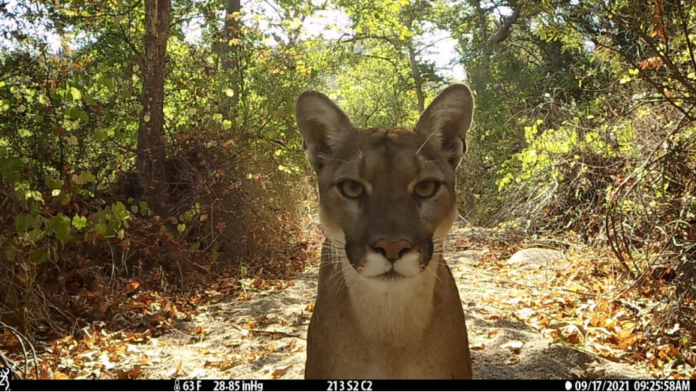Report from UC Davis calls for more wildlife crossings and mountain lion-safe road projects
By LILLY ACKERMAN — science@theaggie.org
A recently published California Wildlife-Vehicle Conflict Report from the UC Davis Road Ecology Center showed that vehicles kill mountain lions at least one to two times per week in California.
Unlike previous wildlife-vehicle conflict reports from the center that covered all California wildlife, this year’s report focused specifically on mountain lions. It includes maps of mountain lion mortality across the state’s highways and explores regional issues that might make some areas more dangerous than others.
According to Winston Vickers, a veterinarian with UC Davis’s Wildlife Health Center, Orange County’s mountain lions for example are most at risk for being struck on medium-sized roads, rather than large freeways or small country roads, due to the county’s infrastructure.
“We have some toll roads in Orange County that were the dominant area where mountain lions would get killed,” Vickers said. “[T]he toll roads were in that bad place where they were not so busy that the mountain lions didn’t try to cross [at all], but they were just busy enough.”
Roadkill has consistently been a cause of death for mountain lions and other California wildlife. However, according to Vickers, significant mountain lion mortalities also come from livestock owners, who obtain permits to shoot mountain lions to prevent them from killing other animals.
“Vehicle strikes have always been — at least in part of our study area, the Santa Ana Mountains — the No. 1 cause of death, causing around half of all the mortalities of collared mountain lions,” Vickers said. “Also, a lot of mountain lions there were lost to depredation permits — when mountain lions would kill livestock. So the two together were pretty substantial causes of death.”
The report’s five main talking points explain the frequency of mountain lion fatalities via collisions with vehicles, as well as the threats to mountain lion populations that these killings pose, especially in hotspots like Southern California and the Bay Area.
“Southern California has deservedly received the lion’s share of focus for conservation of the puma [mountain lion],” the report reads. “Despite the recent ground-breaking for the Wallis-Annenberg wildlife over-crossing, many other highways in the region need similar structures and, as importantly, fencing to prevent mortality and increase connectivity.”
Besides mountain lion mortalities caused directly by vehicle collisions, roads also pose threats to populations’ genetic diversity. Busy, loud freeways usually deter mountain lions from even attempting to cross, keeping small populations separate from one another.
“Quite a few [populations of mountain lions] are [isolated] in California,” Vickers said. “There are 10 documented separate genetic populations, and several of them […] are definitely isolated enough to be suffering potentially from some inbreeding effects.”
Consistent killings from vehicle collisions, coupled with reproductive isolation caused by roads, pose a significant risk for California’s mountain lion populations into the future. More research is needed to encourage funding of mountain lion-safe road projects and wildlife crossings that address both of these obstacles.
“For those projects proposed or under construction in mountain lion habitat, wildlife crossings and fencing should be included in project planning and implementation, or the projects should be avoided,” the report reads.
Vickers hopes that continued research and reports on mountain lions will raise awareness to the public that substantial action needs to be taken to protect these animals.
“I think the biggest impact is increasing the realization on the part of the public that these animals […] are not okay,” Vickers said. “And we actually could lose some of these groups, especially in the smaller mountain ranges.”
Written by: Lilly Ackerman — science@theaggie.org





